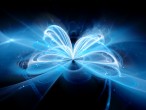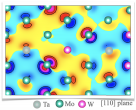
AtomAI Brings Deep Learning to Microscopy Data Analysis Software
Electron and scanning probe microscopes have become critical tools for condensed matter physics, materials science, and chemistry research.

How to Prepare your Home for Summer Heat Waves
From covering windows and planting trees, to upgrading your air conditioning system--PNNL scientists offer tips to keep your home cool in extreme heat

Advances in Quantum Emitters Mark Progress Toward a Quantum Internet
A team of Berkeley Lab researchers has recently demonstrated a more effective technique for creating quantum emitters using pulsed ion beams, which could lead to their use in a quantum internet and for sensing radiation.

Ringing Protons Give Insight into Early Universe
An experiment to explore the 3D structures of nucleon resonances - excited states of protons and neutrons -- at Jefferson Lab offers critical insights into the basic building blocks of matter and has added one more puzzle piece to the vast picture of the chaotic, nascent universe that existed just after the Big Bang.

New Insights into How Strange Matter Interacts with Ordinary Matter
Scientists reported the first observations of how hypernuclei flow from particle collisions. The researchers observed that the hypernuclei flow much the same as ordinary nuclei in a way that scales with their overall nuclear mass.

Making Big Leaps in Understanding Nanoscale Gaps
Creating novel materials by combining layers with unique, beneficial properties seems like a fairly intuitive process--stack up the materials and stack up the benefits.

In Preparation for DUNE, Scientists Examine Modern Nuclear Theory for Neutrino Oscillation Physics
Predictions of neutrino-nucleon interaction made using the Lattice Quantum Chromodynamics (LQCD) nuclear theory method predict stronger interaction than predictions determined from older, less precise experimental data.

Scientists discover shortcut that aids the design of twisty fusion facilities
Scientists have found a mathematical shortcut that could help harness fusion energy, a potential source of clean electricity that could mitigate floods, heat waves, and other rising effects of climate change.

Quantifying Qudits: New Measurements Provide a Glimpse of the Quantum Future
The qubits that make up quantum computers have a lesser-known cousin called qudits. Qudits can carry more information and are more resistant to the noise that can cause qubits to lose information. However, qudits have historically been difficult for scientists to measure and modify.

Long-Lived Quantum State Points the Way to Solving a Mystery in Radioactive Nuclei
Oak Ridge National Laboratory's Timothy Gray led a study that may have revealed an unexpected change in the shape of an atomic nucleus. The finding could affect our understanding of what holds nuclei together, how protons and neutrons interact and how elements form.

SLAC researchers take important step toward developing cavity-based X-ray laser technology
Researchers used diamond mirrors to guide X-ray laser pulses around a rectangular racetrack inside a vacuum chamber. It's an important step toward developing cavity-based X-ray free-electron lasers, or CBXFELs, to make X-ray laser pulses brighter and cleaner - more like regular lasers are today.

Novel hardware approach offers new quantum-computing paradigm
A potentially game-changing theoretical approach to quantum computing hardware avoids much of the problematic complexity found in current quantum computers. The strategy implements an algorithm in natural quantum interactions to process a variety of real-world problems faster than classical computers or conventional gate-based quantum computers can.

Researchers Improve Production for Short-Lived Scandium Radioisotopes
Scandium radioisotopes are potentially useful for cancer therapy and medical imaging such as positron emission tomography (PET) scans, but the difficulty of producing sufficient amounts and purities of these isotopes limits their use. New research describes ways to make and irradiate accelerator targets for scandium to increase production and purity. The process recycles the calcium target material with more than 95% efficiency.

Neutrons seek to stop cancer from hijacking a metabolic highway
Researchers at Oak Ridge National Laboratory used neutrons and x-rays to draw a roadmap of every atom, chemical bond and electrical charge inside a key metabolic pathway in the body that cancer cells hijack and dramatically overuse to reproduce. The study essentially paves the way for developing new drugs that act as roadblocks that cut off the supply of vital resources to cancer cells. The drugs would be designed to target highly aggressive tumor-forming cancers that too often become terminal such as lung, colon, breast, pancreatic and prostate cancers.

Natural or Not? Scientists Aid in Quest to Identify Genetically Engineered Organisms
Ever since gene editing became feasible, researchers and health officials have sought tools that can quickly and reliably distinguish genetically modified organisms from those that are naturally occurring. Now, such tools exist.

Researchers develop a unique quantum mechanical approach to determining metal ductility
A team of scientists from Ames National Laboratory and Texas A&M University developed a new quantum-mechanics-based approach to predict metal ductility. The team demonstrated its effectiveness on refractory multi-principal-element alloys.

Theoretical and Experimental Physics Team Up in the Search for Particle Flavor Change
Scientists recently discovered that neutrinos have mass, counter to long-held understanding. This means that neutrinos can change flavor. Now, advances in theory and experiment are helping scientists to determine whether the neutrinos' charged counterparts--electrons, muons, and tauons--can also change flavor and how future experiments can look for those changes.

Muon g-2 experiment announces updated result that's twice as precise
The Muon g-2 collaboration announced an updated measurement. The new result aligns with the collaboration's first result, and it's twice as precise. The experiment measures a property of the muon that might indicate existence of new particles or forces.

Muon g-2 doubles down with latest measurement, explores uncharted territory in search of new physics
Scientists working on Fermilab's Muon g-2 experiment released the world's most precise measurement yet of the magnetic moment of the muon, bringing particle physics closer to the ultimate showdown between theory and experiment that may uncover new particles or forces.

Pivotal discovery in sensor technology to combat water contamination and more
Researchers have developed an innovative method for screening sensors to detect heavy metals, bacteria and other agents in water. This method could lead to mass manufacturing of sensors that provide dependable part-per-billion monitoring of water quality.

A Single Gene and a Unique Layer of Regulation Opens the Door for Novel Plant-Fungi Interactions
Plants have a complex layer of regulation that allows beneficial fungi to colonize their roots while protecting them from harmful ones such as pathogens. Researchers recently identified the underlying plant signaling processes within this layer of regulation that permits a specific beneficial bacteria species to colonize the roots of switchgrass.

Carpets Retain a Stubborn Grip on Pollutants from Tobacco Smoke
In rooms where smoking has taken place regularly, tobacco's imprint lingers on indoor surfaces, even long after regular smoking has stopped. The leftover residues, known as thirdhand smoke, can be a long-term source of indoor pollutants. New research from a team led by the Department of Energy's Lawrence Berkeley National Laboratory (Berkeley Lab) zeroes in on carpets as an especially potent - and difficult to clean - reservoir of tobacco contaminants.

With a Lithium-6 Test Case, Quantum Computing Comes to a Historic Nuclear Physics Problem
As quantum computing advances, scientists want to know how it may be better able to solve complex problems than today's conventional computers. This research applied quantum computing to determine different energy levels for nuclei of lithium-6. This work shows how to solve a historic nuclear physics research problem on present-day commercially available quantum computer hardware.

Scientists Identify an Alternative System for Producing the Medical Isotope Scandium-44
Scandium-44 is a promising medical isotope for positron emission tomography (PET) imaging for identifying cancer, heart disease, and other conditions. Scandium-44 can be produced through the radioactive decay of titanium-44, but the challenge is to reliably separate scandium-44 from titanium-44 at hospitals. A new approach produces an isotope generator that is portable, uses facilities routinely available at hospitals, and works efficiently and reliably. This will enable medical staff to more easily use scandium-44 for PET scans and other applications.

Researchers Strengthen Defenses Against Common Cyberattack
Scientists have developed a better way to recognize denial-of-service internet attacks, improving detection by 90 percent.
